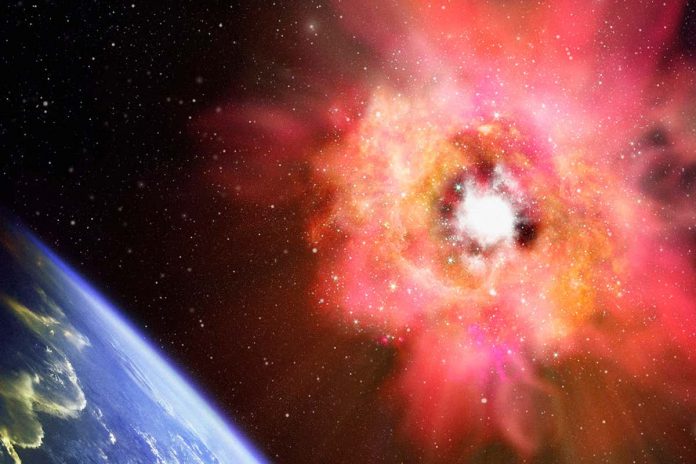[ad_1]

Mehau Kulyk/Science Photo Library
We are getting closer to understanding why the universe is made of matter and not antimatter. It may be all down to how neutrinos change flavours.
Our leading theories tell us that, in the moments after the big bang, there was an equal amount of matter and antimatter. The two annihilate when they meet, which means the universe should contain energy and no matter. Somehow, a significant chunk of matter avoided this fate, and ultimately turned into stars, planets and people. Quite why is a long-standing mystery.
But there are clues. Theory tells us that for each type of matter particle there is an antimatter particle that is an exact match except for having the opposite electrical charge. This concept is called CP symmetry. For some matter to have survived the early universe, there must be some other differences between matter and antimatter – these differences are called CP violation.
Advertisement
CP violation has been measured in some particles, called quarks, but the level isn’t nearly enough to explain the observed imbalance between matter and antimatter. Now, the Tokai to Kamioka (T2K) collaboration has observed hints that CP violation in neutrinos may be able to make up the difference.
There are three types, or flavours, of neutrinos: electron, muon and tau. As they travel, neutrinos can switch, or oscillate, among these flavours. The T2K experiment in Japan is designed to measure those oscillations by shooting beams of neutrinos or antineutrinos 295 kilometres through the ground and measuring which flavours are there at the beginning and end of the neutrinos’ journey.
Federico Sanchez and his colleagues at T2K examined data on muon neutrinos and antineutrinos changing flavour from 2009 to 2018, looking for differences between the oscillations of the neutrino and antineutrino beams. They ruled out CP symmetry with 95 per cent confidence – in fact, the data favoured the maximum possible amount of CP violation.
Over the past decade, hints of CP violation in T2K data have been slowly building. “The picture that’s in this paper has been emerging gradually,” says Edward Blucher at the University of Chicago. “This has been like a photographic image that’s been getting sharper and sharper over the last decade.”
We aren’t yet entirely sure that neutrino oscillations violate CP symmetry, though. “The most probable solution is maximal CP violation, but we haven’t disproved all possible ways to get no CP violation,” says Sanchez. In particle physics, researchers usually require 99.99994 per cent confidence before they declare a finding certain.
And even if the oscillations do produce the maximum possible amount of CP violation, we’re not sure whether that would be enough to completely explain the imbalance between matter and antimatter.
“Studying the universe is like building a building, so you have to understand and measure every brick,” says Sanchez. “If, in the end, this is not enough to produce matter-antimatter asymmetry, fine – it is still an important brick.”
The amount of CP violation will probably be found by neutrino experiments that are being worked on now, like the T2HK experiment in Japan or DUNE in the US.
“This is much more of a marathon kind of effort than a sprint, and this work represents an important first step,” says Blucher. “If these hints of large CP violation turn out to be correct, there’s a good chance that the next generation of experiments will confirm it relatively soon, within the next 15 years or so.”
Journal reference: Nature, DOI: 10.1038/s41586-020-2177-0
More on these topics:
[ad_2]
Source link











